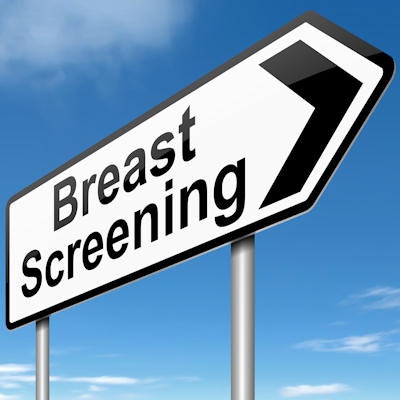
Risk-based breast cancer screening isn't necessarily more effective -- on a clinical or cost basis -- if women don't choose to get screened at high enough rates, according to a study from Germany published online May 23 in PLOS One.
The findings suggest that risk-based screening, although it may have its benefits, requires measures to ensure that enough women turn out to get screened, wrote a team led by Matthias Arnold of the University of York in the U.K.
"[A] decision for or against risk-stratified screening requires explicit decision criteria," the group wrote. "The strategies that maximize mortality reduction do not necessarily also maximize quality of life. In addition, decisions based on perfect assumptions are not the same as decisions based on real-world data."
National breast cancer screening programs are subject to criticism that the so-called harms of mammography, such as false positives and unnecessary biopsies, outweigh its benefits. To mitigate these harms, researchers have begun to explore strategies that take into consideration a woman's lifetime risk of breast cancer in the hopes of crafting screening protocols tailored to individuals.
But it's unclear whether tailored breast screening is actually more effective when it comes to both reducing harm and managing healthcare costs -- especially since proposals for risk-based screening are often based on the notion of full compliance, according to the authors.
"Recent studies have taken up the challenge of evaluating risk-stratified screening proposals. However, all evaluations were made under the assumption of full adherence," the group wrote. "In our previous work, we were able to demonstrate that the performance of screening programs is sensitive to changes in the adherence assumption. Thus, assuming full adherence biases the simulation results."
Arnold and colleagues sought to explore the effectiveness and efficiency of risk-stratified breast cancer screening when women's adherence isn't perfect. They based the study on a model that simulated the German breast cancer screening program, but instead, women were assigned to annual, biennial, or triennial routine screening based on their risk of breast cancer.
The group then used three outcome variables under assumed adherence rates of both 100% and 54%, the latter being the mammography adherence rate in Germany. The team analyzed three outcomes: mortality reduction, quality-adjusted life years (QALY), and false positives. Economic analysis for procedure costs was based on resources such as German national pricing information, diagnosis-related groups, or published literature and used 2017 euro values, according to the team.
Overall, the authors found that risk-stratified screening strategies were more efficient than biennial routine screening under certain conditions. Without clear decision criteria and patients' willingness to pay for screening services, however, risk-stratified screening was not more efficient than biennial routine screening.
| Effectiveness of risk-based breast cancer screening programs | |||
| Annual screening | Biennial screening | Triennial screening | |
| 100% screening compliance | |||
| Mortality reduction | 16.9% | 14.5% | 12.2% |
| Incremental QALY | 0.044 | 0.039 | 0.033 |
| Biopsies after false-positive screening result (per individual woman) | 0.096 | 0.05 | 0.037 |
| Incremental cost in euros (U.S. dollars), rounded | 811 ($909) | 428 ($480) | 305 ($342) |
| 54% screening compliance | |||
| Mortality reduction | 10% | 8.8% | 7.7% |
| Incremental QALY | 0.026 | 0.023 | 0.020 |
| Biopsies after false-positive screening result (per individual woman) | 0.054 | 0.30 | 0.022 |
| Incremental cost in euros (U.S. dollars), rounded | 431 ($483) | 224 ($251) | 157 ($176) |
"Our analysis shows that risk-stratified screening programs can be more efficient, but the decision is dependent on the decision criteria, i.e., whether mortality reduction or QALY is more important, how much one is willing to pay for these health outcomes, and the adherence assumption," the group wrote.
The study results show that there's more work to be done to establish the best breast cancer screening protocol from both a clinical and an economic perspective, according to Arnold's team.
"If the participation rate for mammographic screening is as low as in Germany, stratified screening is not clearly more efficient than routine screening but dependent on the willingness to pay," the group concluded. "A more promising design for future stratified strategies is the combination of risk stratification mechanisms with interventions to improve the low adherence in selected high-risk groups."




















